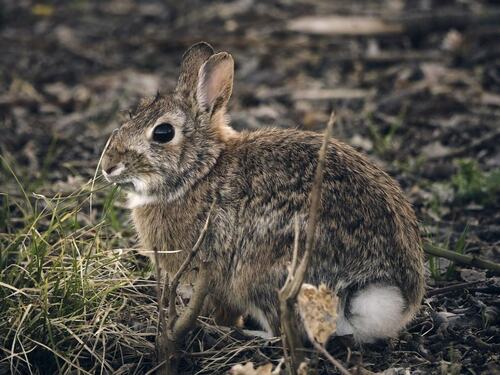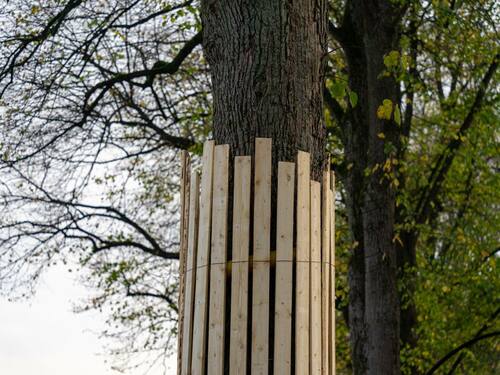Animals May Damage Your Trees in Winter
Introduction
Winter is a challenging time for both trees and the animals that rely on them for survival. While it’s fascinating to observe how wildlife endures the harsh conditions of cold, snow, and ice, it can be disheartening to discover the damage they may inflict on your trees. Deer, squirrels, rabbits, and chipmunks are just a few of the creatures that remain active year-round, and during the winter, they can cause significant harm to your trees.
Why Protecting Trees in Winter is Essential
In the warmer months, we often focus on safeguarding our gardens by placing wire around vulnerable plants like hydrangeas and rose bushes to keep deer at bay. We also check for holes and burrows created by rabbits, moles, and field mice. However, trees are often overlooked when it comes to winter protection, despite being equally vulnerable to animal damage.
The Impact of Deer on Trees: Rutting Season and Bark Rubbing

A Young Buck Stands in an Autumn Forest – Image by RickDekker from Pixabay
Understanding Rutting Season
During early autumn, male deer enter rutting season , a period when they rub their antlers against trees to remove the velvet. With approximately half a million deer in California, these animals pose a significant threat to trees, especially during fall and early winter. Thin-barked trees, such as birch and redbud, are particularly susceptible to deer damage.
The Consequences of Bark Rubbing
When deer rub their antlers against a tree, they can strip away bark, sometimes encircling the entire trunk. This damage, known as girdling, can be fatal to a tree. Girdling disrupts the flow of nutrients and energy, cutting off the tree’s ability to transport essential resources up and down its trunk. In severe cases, the tree may not survive, making it crucial to consult with a certified arborist to assess the damage. While some trees can recover, they may lose limbs above the damaged area.
Damage from Smaller Animals: Rabbits, Squirrels, Moles, and Field Mice

A Brown Rabbit on Bare Winter Ground – Image by Matteo Baronti from Pixabay
Hidden Dangers Below the Surface
While deer damage is more apparent on the upper half of the trunk, smaller animals like rabbits, squirrels, moles, and field mice can cause significant harm to the lower section of a tree. Much of this damage occurs below the surface, making it difficult to detect until it’s too late. Field mice , for example, chew on bark below ground, causing slow but severe damage to a tree’s health.
Visible Damage Above Ground
Rabbit damage , on the other hand, is more visible, as they gnaw on the bark above the soil line, leaving noticeable scars on the tree’s exterior. As snow accumulates, it can conceal this damage, making it harder to spot until spring, when the tree’s health may have already been compromised.
How to Protect Your Trees from Winter Wildlife Damage

Boards are Used to Protect a Tree Trunk
Physical Barriers
At Arborist Now, we recommend installing physical barriers around your trees to prevent wildlife from accessing them. These barriers can include wire mesh or tree guards that shield the bark from animals like deer and rabbits.
Tree Wrapping
Wrapping the trunks of vulnerable trees with burlap or a specialized tree wrap can also help protect them from animal damage. This method is particularly effective for young or thin-barked trees that are more susceptible to girdling.
Adjusting Mulch
Proper mulch placement can also play a role in deterring animals. By adjusting the mulch around the base of your trees, you can create an environment that is less attractive to burrowing animals like moles and field mice.
Contact Arborist Now for Expert Tree Protection
If you live in an area frequented by wildlife, it’s essential to take proactive measures to protect your trees throughout the winter. Our team of certified arborists at Arborist Now has the experience and tools to safeguard your trees from winter wildlife damage. Whether it’s installing barriers, wrapping trees, or adjusting mulch, we’re here to help ensure that your trees remain healthy and vibrant until spring arrives.
Originally posted on February 16, 2021.


